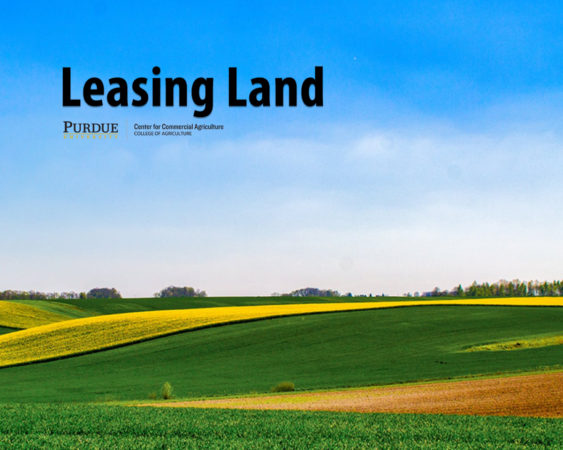September 16, 2019
Incorporating Conservation Practices and Improvements into Cropland Leases?
I often get asked how a tenant or landowner can encourage conservation practices on a rented farm. Conservation practices and improvements will typically not be made unless it is agreed upon in advance how these costs will be shared and the impact of these practices and improvements on production risk. It is also important that the tenant is assured that he or she will be compensated for unexhausted or remaining value of improvements if the lease is terminated. This article will provide cropping practice examples and discuss how investments can be shared.
One of the ways to maintain conservation practices and improvements on leased land is to include a list of cropping practices in a written lease supplement. When considering items that should be included in the lease supplement it is important to consider two items. First, conservation practices and improvements should be agreed to in advance. Second, if an operator or tenant is incurring additional costs or risk, he or she should be compensated during the lease or for some long-term improvements at the end of the leasing period for this fact.
Cropping practice examples that may be included in a lease supplement include, but are not limited to, cover crops, waterways, ground cover, fall tillage and fertilization, crop rotations, and farm ponds. Compensation mechanisms (i.e., rent adjustments) for the items above should be included in the lease. Compensation for permanent practices such as maintaining terraces, windbreaks, or diversion ditches; pasture improvement; and buffer zones typically involves using capital budgeting techniques, such as the use of depreciation and remaining value. Specifically, with permanent practices it is important to keep track of contributions by the landlord and operator, and annual depreciation of each practice, as well as discuss the method used to recover the remaining value of each practice.
It is important to reiterate the importance of economic considerations when creating a lease supplement pertaining to conservation practices and improvements. Crop leases need to provide a business framework that encourages efficient use of capital, labor, and management, and that encourages the use of new technology, in addition to maintaining soil health. In the long-run, net returns should be shared in an equitable manner. Rent adjustments need to be made in situations where the operator or tenant incurs costs related to conservation practices and improvements.
As a final note, good communication between operators and landlords is essential. Landowners should discuss potential practices with the operator, instead of simply insisting that certain practices be utilized. Most operators are interested in renting ground for a long period of time, so they are also interested in long-run productivity and the soil health of each tract of land that they farm.
TEAM LINKS:
PART OF A SERIES:
RELATED RESOURCES
UPCOMING EVENTS
December 1 & 8, 2025
Join Purdue Extension for a two-part workshop designed to help you gain a clearer understanding of tax planning essentials. The first session on December 1 will focus on the fundamentals of farm taxes, with particular emphasis on strategies that can be used in a low net income year. The second session on December 8 will focus on key tax strategies and will allow plenty of time for questions. Registration cost is only $20.
Read MoreDecember 15, 2025
This program provides in-depth coverage of agricultural and farm tax issues. In addition to covering timely tax issues, we will cover disaster tax issues, depreciation and expensing farm assets, retirement planning for farms, and tax planning in low-income years. This year’s webinar will be co-taught by a team from Ohio State and Purdue Universities.
Read MoreJanuary 27 or 28, 2026
Farm Shield is more than a conference, it’s a commitment to helping agricultural families build resilience and plan for a secure future. Don’t miss this opportunity to protect your legacy!
Read More